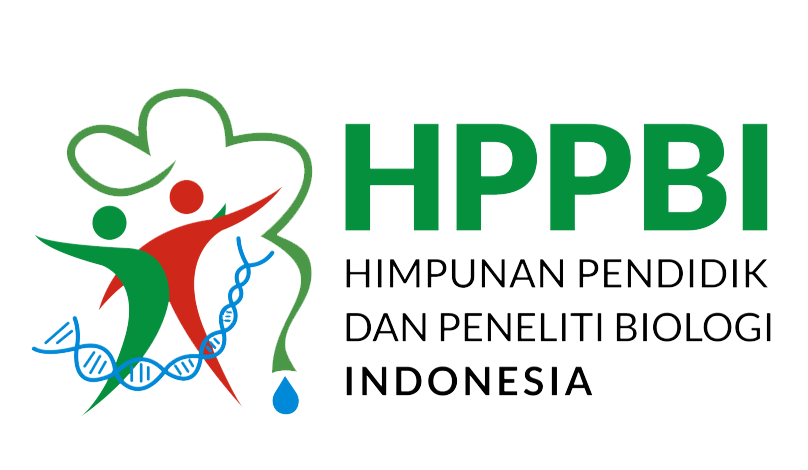PENGARUH MODEL PEMBELAJARAN PROBLEM BASED LEARNING BERBANTU MEDIA AUGMENTED REALITY UNTUK MENINGKATKAN HIGHER ORDER THINKING SKILL KELAS XI PADA METERI SEL DI SMAN 1 ABUNG SELATAN LAMPUNG UTARA
Abstract
Background: Bananas are widely consumed by the people due to their soft texture, easy digested, and can be consumed directly or processed again. This fruit has characteristics that are suitable for Indonesia’s growth climate. Asia ranks first as the largest banana producer, with Indonesia being the third-largest producer. Bananas are generally classified as a source of Vitamin C, also known as Ascorbic Acid. When consuming, many people store it in the refrigerator to keep it fresh. The increase in ascorbic acid content occurrs along with longer storage time. This research aims to study the changes in ascorbic acid levels in bananas due to the effects of storage time at room temperature and refrigerator temperature.
Methods: This research use a laboratory experimental by testing the levels of Ascorbic Acid contained in bananas using the spectrophotometry method in April 2024
Results: This research shows that the ascorbic acid content in bananas stored for varying durations at room temperature is lower than refrigerator temperature, and there is an interaction between storage time and storage temperature.
Conclusion: The decrease in ascorbic acid levels occurred due to the interaction between storage time and room temperature and refrigerator temperature
Downloads
References
Hobri, H., Septiawati, I., & Prihandoko, A. C. (2018). High-order thinking skill in contextual teaching and learning of mathematics based on lesson study for learning community.
Ichsan, I. Z., Sigit, D. V., Miarsyah, M., Ali, A., & Suwandi, T. (2020). Implementation Supplementary Book of Green Consumerism: Improving Students HOTS in Environmental Learning. European Journal of Educational Research, 9(1), 227-237
Jumadi, O. (2018). Penerapan Model Problem Based Learning (PBL) dalam Meningkatkan Kemampuan Berpikir Kreatif dan Hasil Belajar Siswa. Prosiding Seminar Nasional Biologi Dan Pembelajarannya, 257–262.
Lubis, N., Ashadi, R. I., & Setiawan, Y. (2019). Self Concept Dan Higher Order Thinking Skill (Hots) Questions Dalam Komunikasi Interpersonal. Jurnal Penelitian Pendidikan Bahasa Dan Sastra, 4(2), 506-511.
Preus, H., & Gjermo, P. E. (2007). Are topically delivered antibiotics beneficial as adjunct to scaling and root planning in the treatment of periodontal diseases? A systematic review. Perio, 4(1), 31–36. https://www.researchgate.net/publication/259737932
Risti, I. S., & Irawati, H. (2022). Effect of Problem Based Learning on Metacognitive and Higher Thinking Ability in High School Biology: Study of Literature. Jurnal Atrium Pendidikan Biologi, 7(2), 97. https://doi.org/10.24036/apb.v7i2.12463
Robiyanto, Agus. 2021. Pengaruh Model Problem Based Learning terhadap Hasil Belajar Siswa. Mahaguru: Vol. 2– No. 1, year (2021), page 114-121
Royantoro, F., Mujasam, M., Yusuf, I., &Widyaningsih, S. W. (2018). Pengaruh Model Problem Based Learning terhadap Higher Order Thinking Skills Peserta Didik. Berkala Ilmiah Pendidikan Fisika, 6(3), 371. https://doi.org/10.20527/bipf.v6i3.5436.
Utami, A. D. (2016). Tipe kesalahan mahasiswa dalam menyelesaikan soal-soal geometri berdasar newman’s error analysis (NEA). JIPM (Jurnal Ilmiah Pendidikan Matematika), 4(2), 85-92.
Yen, T. S., & Halili, S. H. (2015). Effective teaching of higher order thinking (HOT) in education. The Online Journal of Distance Education and e-Learning, 3(2), 41-47.
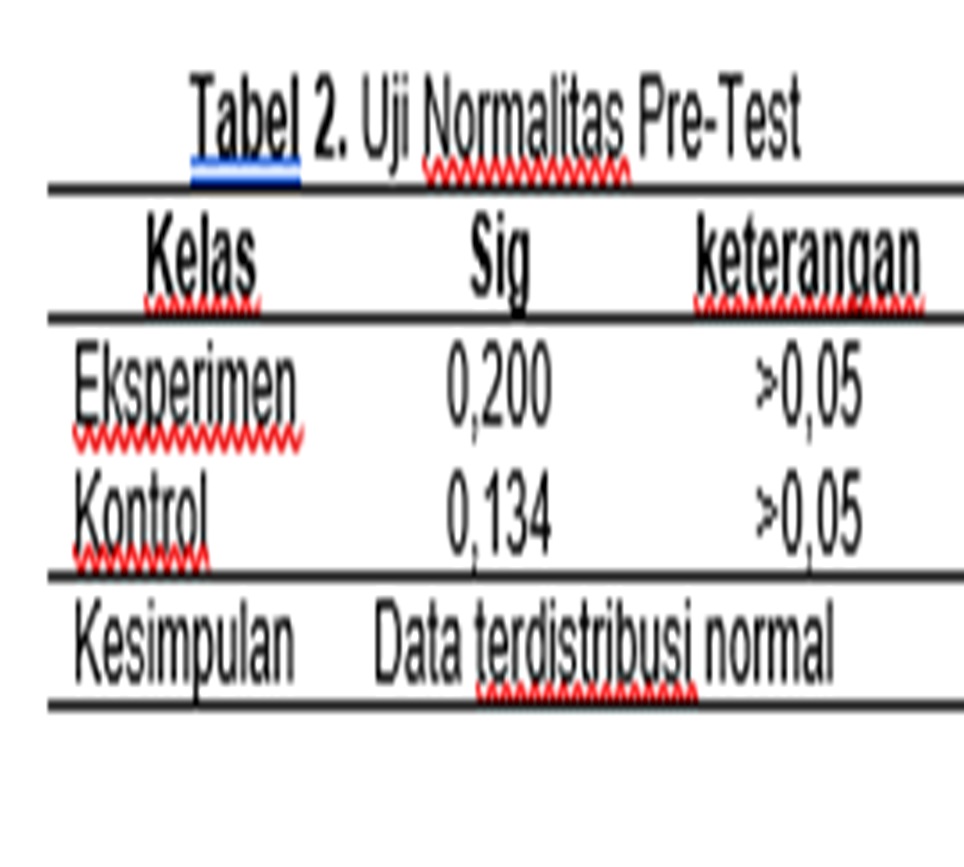
Copyright (c) 2025 Raicha Oktafiani, Anggun Febriyana, Nukhbatul Bidayati Haka, Aryani Dwi Kesumawardani

This work is licensed under a Creative Commons Attribution-ShareAlike 4.0 International License.
Authors who publish with BIOPENDIX: Jurnal Biologi, Pendidikan dan Terapan agree to the following terms:
- Authors retain copyright and grant the journal right of first publication with the work simultaneously licensed under Creative Commons Atribution-ShareAlike 4.0 International License (CC BY-SA 4.0) that allows others to share the work with an acknowledgment of the work's authorship and initial publication in this journal.
- Authors are able to enter into separate, additional contractual arrangements for the non-exclusive distribution of the journal's published version of the work (e.g., post it to an institutional repository or publish it in a book), with an acknowledgment of its initial publication in this journal.
- Authors are permitted and encouraged to post their work online (e.g., in institutional repositories or on their website) prior to and during the submission process, as it can lead to productive exchanges, as well as earlier and greater citation of published work.

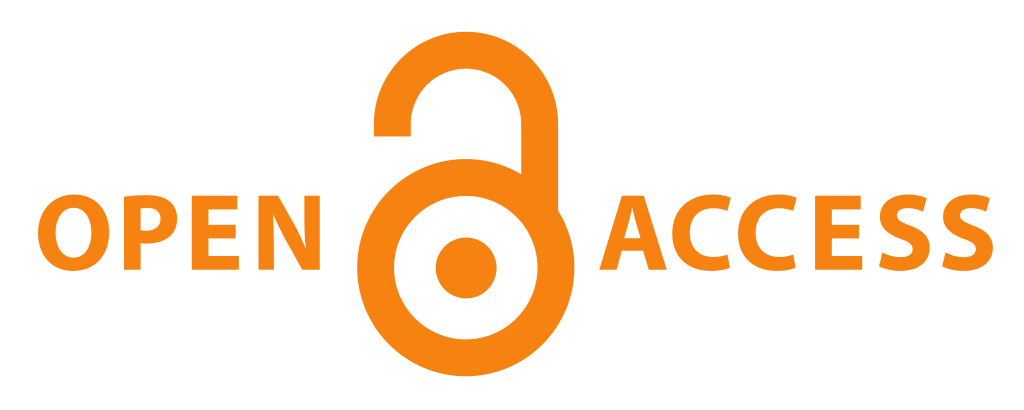

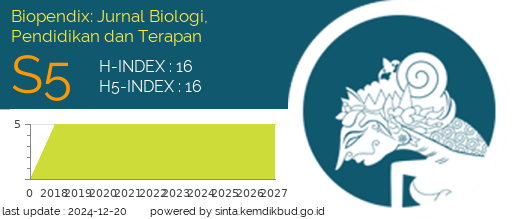
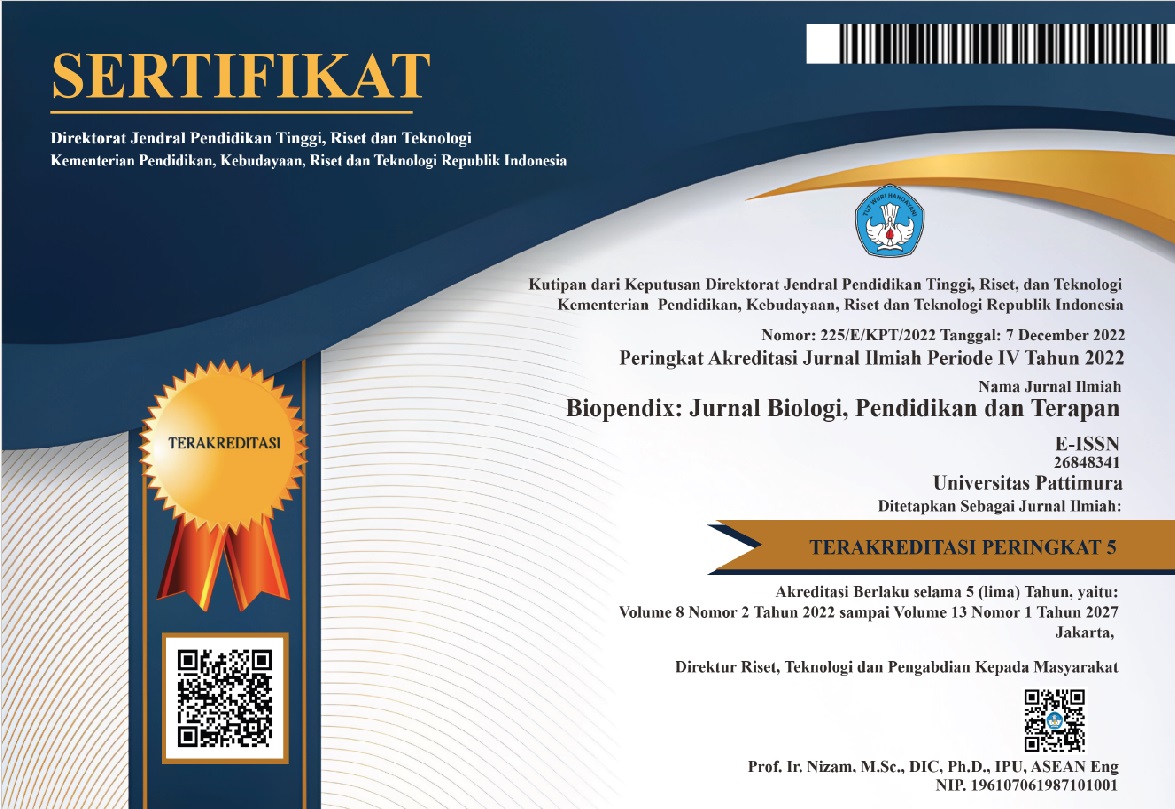 2
2




